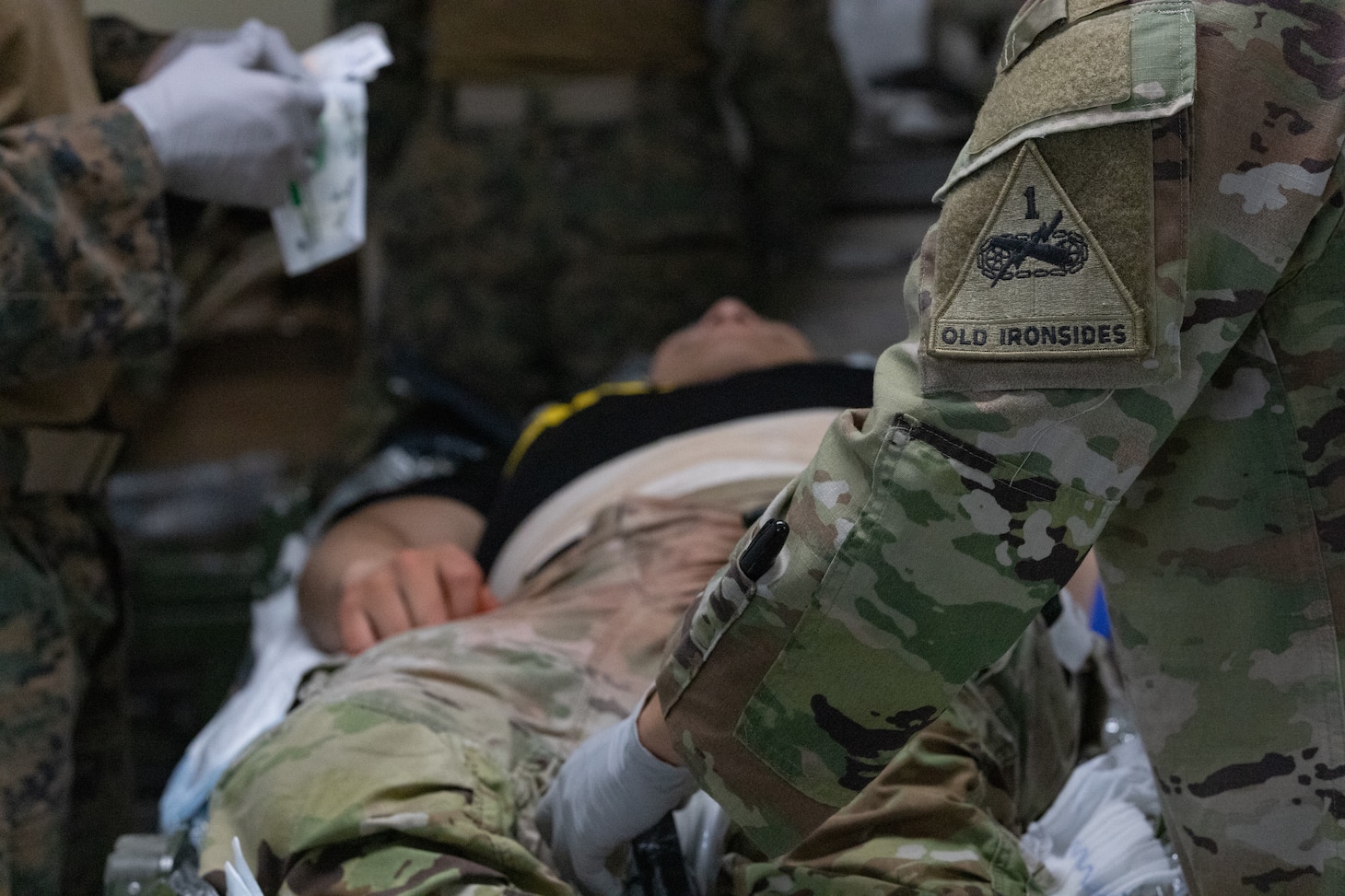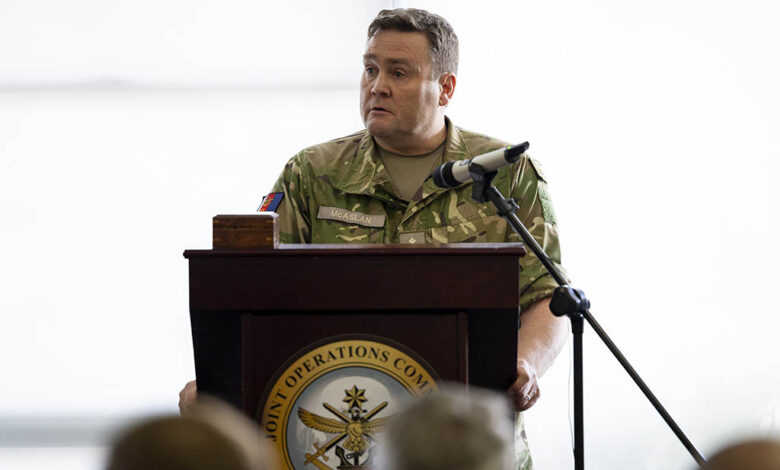South Korea – Amid the towering trees and dense brush of the Korean forest, U.S. Army combat medics and U.S. Navy corpsmen united to sharpen their skills and enhance their joint operational effectiveness.
U.S. Army combat medics assigned to 4th Battalion, 70th Armor Regiment, 1st Armored Brigade Combat Team, 1st Armored Division, and U.S. Navy corpsmen assigned to 3rd Medical Battalion, 3rd Marine Logistics Group, engaged in a rigorous cross-training exercise during Pacific Fortitude. They focused on refining their expertise in care under fire, tactical field care, and evacuation procedures.

U.S. Army combat medics assigned to 4th Battalion, 70th Armor Regiment, 1st Armored Brigade Combat Team, 1st Armored Division, and U.S. Navy corpsmen assigned to 3rd Medical Battalion, 3rd Marine Logistics Group, engage in a rigorous cross-training exercise during Pacific Fortitude at Rodriguez Live Fire Complex, South Korea, August 13, 2024. Pacific Fortitude supports long-standing agreements to the Republic of Korea by deploying forces, drawing and supporting equipment to validate unit readiness and the U.S. commitment to the ROK-US alliance. (U.S. Army photo by Spc. Hunter Grice)
“Today’s objective was to evaluate our teamwork and gain insight into how we would operate together in future combat situations,” said Sgt. Rachael Dickson, a combat medic.
The exercise began with a simulated scenario where a tactical vehicle struck a landmine, causing a fire and multiple casualties. Medics quickly responded providing care under fire while simulated small arms fire intensified. Soldiers returned fire to secure the area allowing medics to move the injured to safety and transition to tactical field care.
During this phase, medics conducted thorough assessments, including blood sweeps and identifying injured areas, while monitoring airway, respiratory, and circulatory issues, and applying care.
“We thoroughly reviewed all treatments administered by the line medics,” said Spc. Joshua McAlister, combat medic. “We rechecked every intervention, continued any incomplete procedures or medications and ensured all documentation was current, providing the patient with the best possible care.”
Once stabilized, medics called in a 9-line medevac request for air evacuation. The crew then transported the litter to the helipad and loaded the patients onto the helicopter for evacuation.
Throughout the exercise, combat medics and corpsmen worked closely together, assuming diverse roles such as note taking and documentation, transporting casualties, retrieving tools and equipment, and performing essential procedures like applying tourniquets, inserting intravenous catheters, and simulating chest tube placements, all while maintaining clear and professional communication.
“My team will take away valuable lessons from today, including the camaraderie built, the opportunity to make new connections, and the experience of working with medics from outside the Army,” said Dickson. “This exercise was a great chance to see how well we function as a joint force.”
Teams were continuously evaluated by a primary care physician, emergency room doctor, and multiple physician assistants who provided feedback and oversight, facilitating detailed treatments and improvements in care.
At the end of the day, evaluators and leaders offered comprehensive feedback, helping teams identify areas for improvement. To conclude their cross-training, the teams enjoyed morale flights on the helicopters taking in the stunning vistas of Korea.
“This was an excellent opportunity for our different branches to come together, learn from one another, and advance our medical expertise,” said Lt. Cmdr. Meghann Wilson. “We gained valuable insights from our Army counterparts and look forward to continuing our joint practice and working seamlessly as a unified force.”





